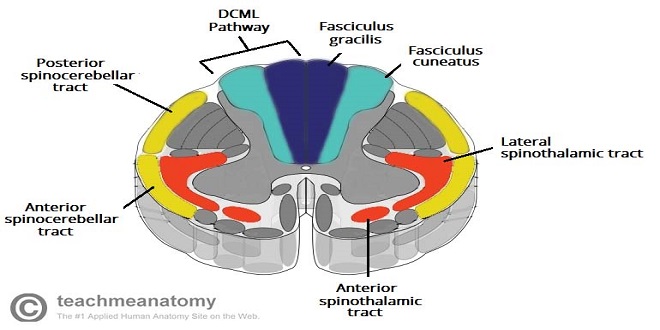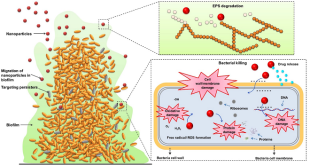SENSORY PATHWAY
The impulses involved in sensations follow very precise pathways, which all have the following parts:
- Receptors—detect changes (stimuli) and generate impulses. Receptors are usually very specific with respect to the kinds of changes they respond to. Those in the retina detect light rays, those in the nasal cavities detect vapors, and so on. Once a specific stimulus has affected receptors, however, they all respond in the same way by generating electrical nerve impulses
- Sensory neurons—transmit impulses from receptors to the central nervous system. These sensory neurons are found in both spinal nerves and cranial nerves, but each carries impulses from only one type of receptor.
- Sensory tracts—white matter in the spinal cord or brain that transmits the impulses to a specific part of the brain.
CHARACTERISTICS OF SENSATIONS
Certain characteristics of sensations will help you understand how the sensory areas work with information from the receptors.
- Projection—the sensation seems to come from the area where the receptors were stimulated.
- Intensity—some sensations are felt more distinctly and to a greater degree than are others. A weak stimulus such as dim light will affect a small number of receptors, but a stronger stimulus, such as bright sunlight, will stimulate many more receptors. When more receptors are stimulated, more impulses will arrive in the sensory area of the brain. The brain “counts” the impulses and projects a more intense sensation.
- Contrast—the effect of a previous or simultaneous sensation on a current sensation, which may then be exaggerated or diminished. Again, this is a function of the brain, which constantly compares sensations. If, on a very hot day, you jump into a swimming pool, the water may feel quite cold at first.
CUTANEOUS SENSES
The dermis of the skin and the subcutaneous tissue contain receptors for the sensations of touch, pressure, heat, cold, and pain. The receptors for pain, heat, and cold are free nerve endings, which also respond to any intense stimulus. Intense pressure, for example, may be felt as pain.
REFERRED PAIN
Free nerve endings are also found in internal organs. The smooth muscle of the small intestine, for example, has free nerve endings that are stimulated by excessive stretching or contraction; the resulting pain is called visceral pain. Sometimes pain that originates in an internal organ may be felt in a cutaneous area; this is called referred pain. The pain of a heart attack (myocardial infarction) may be felt in the left arm and shoulder, or the pain of gallstones may be felt in the right shoulder.
MUSCLE SENSE
Muscle sense (also called proprioception or kinesthetic sense) was discussed and will be reviewed only briefly here. Stretch receptors (also called proprioceptors or muscle spindles) detect stretching of muscles and generate impulses, which enable the brain to create a mental picture to know where the muscles are and how they are positioned. Conscious muscle sense is felt by the parietal lobes. Unconscious muscle sense is used by the cerebellum to coordinate voluntary movements.
SENSE OF TASTE
The receptors for taste are found in taste buds, most of which are in papillae on the tongue. These chemoreceptors detect chemicals in solution in the mouth. The chemicals are foods and the solvent is saliva.
SENSE OF SMELL
That may seem impressive, but the human sense of smell is very poorly developed compared to those of other animals. Dogs, for example, have a sense of smell about 2000 times more acute than that of people. (It has been said that most people live in a world of sights, whereas dogs live in a world of smells.) As mentioned earlier, however, much of what we call taste is actually the smell of food.
EYEBALL
Most of the eyeball is within and protected by the orbit, formed by the lacrimal, maxilla, zygotic, frontal, sphenoid, and ethnocide bones. The six extrinsic muscles of the eye are attached to this bony socket and to the surface of the eyeball. There are four rectus (straight) muscles that move the eyeball up and down or side to side; the name tells you which direction. The medial rectus muscle, for example, pulls the eyeball medially, as if to look at the nose. The two oblique (slanted) muscles rotate the eye. The cranial nerves that innervate these muscles are the coulometer, trochlear, and abduces.
SUMMARY
Changes take place all around us as well as within us. If the body could not respond appropriately to environmental and internal changes, homeostasis would soon be disrupted, resulting in injury, illness, or even death. To respond appropriately to changes, the brain must know what they are. Conveying this information to our brains is the function of our senses. Although we may sometimes take our senses for granted, we could not survive for very long without them.
 Pagal World
Pagal World




